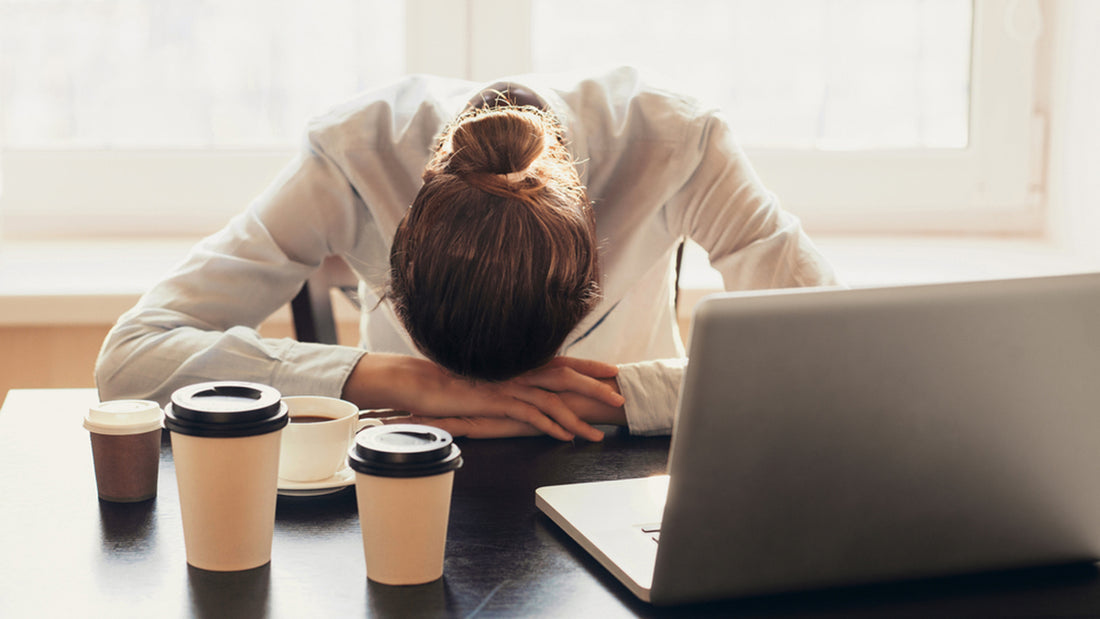
We all know how coffee and other caffeinated food and beverages work. You’re tired, so you drink some coffee. In a few minutes, you’re feeling much perkier. Perhaps you have another, and then even another. You’re feeling great! And then all of a sudden, you’re even more tired than you were in the beginning. What this describes is a caffeine crash.
Being tired in the afternoon makes it feel nearly impossible to finish your day. We don’t want this to happen to you! A little education can go a long way. We want you to learn more about why coffee makes you sleepy, and why getting a better night’s sleep can help minimize the side effects that come along with a caffeine crash.
What is a Caffeine Crash?
For one, caffeine can affect stress. Known as the stress hormone, Cortisol levels can be boosted by drinking caffeine. When Cortisol levels are raised, it can put you on high alert, leading to feelings of anxiety and stress. This is why you feel more awake. However, it does eventually drop off and this can lead to feelings of fatigue later on in the day.
Another factor to consider is Adenosine. Coffee blocks the effects of Adenosine, which is a molecule that’s naturally produced by your body and makes you feel sleepy. When you drink coffee, your body absorbs the caffeine in it, and when this caffeine reaches your brain, it sticks to your Adenosine receptors. When the caffeine blocks the effects of Adenosine, it makes you feel alert. Once the caffeine wears off, though, your body experiences a buildup of Adenosine that hits you all at once! This is a big reason why coffee can make you eventually feel tired.
Is Caffeine Bad for You?
If you “crash” from something, surely it must be bad for you. Not quite, actually. Caffeine consumption in and of itself isn’t bad for you. However, caffeine does have the potential to cause problems if you aren’t careful. If you’re habitually overindulging in caffeine, you may experience negative side effects like anxiety, trouble sleeping, restlessness, and an irregular heartbeat.
To safely consume caffeine, it’s essential to monitor your intake. Just like many other things in life, it’s all about moderation. A piece of chocolate cake on your birthday (or simply to celebrate getting through another Monday) is perfectly fine, but you wouldn’t eat an entire cake every single day. One glass of red wine with dinner is good for your heart. One bottle of red wine with lunch is not! The same mindset applies to your caffeine consumption. The FDA recommends a maximum of 400 milligrams per day for most adults, which is the equivalent to four 8-ounce cups of coffee.
How Long Does Caffeine Stay in Your System?
After drinking caffeine, you may start to feel the effects in as little as 15 minutes, but the full effect typically peaks in about an hour. About six hours after initial consumption, half of the caffeine is still in your system, and it finally exits your system a full 10 hours after first drinking it. This means you need to do a bit of math in order to ensure your caffeine consumption doesn’t affect your nightly bedtime routine. If you plan to go to sleep at 10 pm, you should cut off drinking coffee by noon.
It’s important to note that while we are discussing coffee, this rule applies to any caffeinated food or beverage. This includes sodas, protein bars, chocolate, kombucha, and more. When in doubt, check the ingredient label before you eat or drink something late into the evening.
How to Avoid Ingesting Too Much Caffeine
The best way to avoid a caffeine crash is by drinking less of it, and the best way to drink less caffeine is to get the energy you need in a natural way. A healthy diet, daily exercise, and a top-quality mattress means you’ll need less caffeine to get through your day.
A wakeful and productive morning doesn’t begin with coffee; it starts with a good quality sleep the night before! One way to ensure you sleep well is to avoid any caffeine in the afternoon and evening, and another is to sleep on a luxury latex mattress made by PranaSleep. Between our collections, we have many different latex mattress options. We encourage you to either spend your time doing some online research or visit a retail partner to feel these mattresses in person, so you find your favorite.
If you want to really feel the difference Talalay Latex can make in your life, you’ll want to look into our PranaSleep Om Collection. It features natural silk, wool, and cashmere, as well as a core and comfort layers composed of 100% natural Talalay Latex. Our PranaSleep Om cores come from a foam manufacturer located in the Netherlands. There are no fillers used in the making of our 100% natural latex. These mattresses are so well made, they are guaranteed for 10 years and warrantied for 20 years.
This mattress is only the beginning of the exceptional mattress choices we offer, all of which will help you sleep better and require less caffeine to get through your day. When you drink less caffeine, you won’t have the dreaded caffeine crash in the afternoon.

